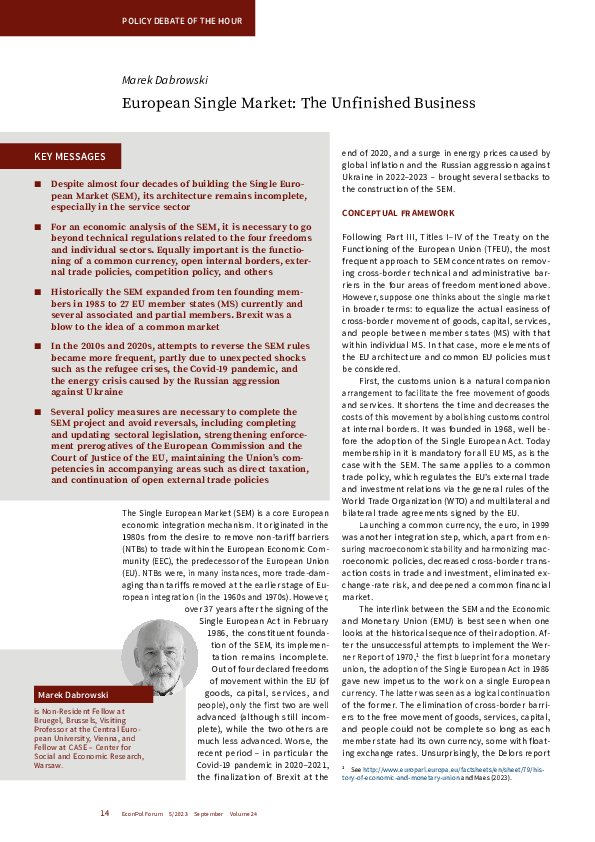Article in Journal
The Single European Market: The Unfinished Business
Marek Dabrowski
CESifo, Munich, 2023
EconPol Forum 24 (5), 14-18
CESifo, Munich, 2023
EconPol Forum 24 (5), 14-18

- Despite almost four decades of building the Single European Market (SEM), its architecture remains incomplete, especially in the service sector
- For an economic analysis of the SEM, it is necessary to go beyond technical regulations related to the four freedoms and individual sectors. Equally important is the functioning of a common currency, open internal borders, external trade policies, competition policy, and others
- Historically the SEM expanded from ten founding members in 1985 to 27 EU member states (MS) currently and several associated and partial members. Brexit was a blow to the idea of a common market
- In the 2010s and 2020s, attempts to reverse the SEM rules became more frequent, partly due to unex-pected shocks such as the refugee crises, the Covid-19 pandemic, and the energy crisis caused by the Russian aggression against Ukraine
- Several policy measures are necessary to complete the SEM project and avoid reversals, including completing and updating sectoral legislation, strengthening enforcement prerogatives of the Euro-pean Commission and the Court of Justice of the EU, maintaining the Union’s competencies in ac-companying areas such as direct taxation, and continuation of open external trade policies